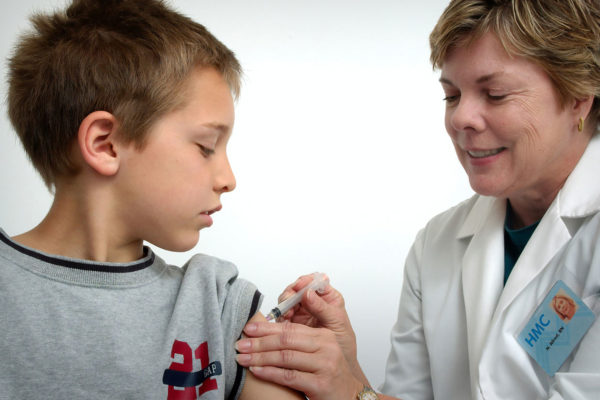AUSTIN, Texas — Texans who are college-educated, live in suburban or urban areas, have higher median incomes and are ethnically white are less likely to vaccinate their children, according to analysis by researchers at The University of Texas at Austin. The findings could help public health officials identify pockets of low vaccination rates where communities within the state are at higher risk for an outbreak of vaccine-preventable diseases such as measles.
In a paper published today in the journal PLoS Medicine, professor of integrative biology Lauren Ancel Meyers, a computational epidemiologist, and her team at UT Austin compared publicly available census data with the number of conscientious vaccination exemptions from public, private and charter school systems across Texas. The state is one of 15 to allow families who cite a philosophical objection to vaccines to opt out of immunizations for their children that are otherwise required for enrolling in school. A total of 45 states and Washington, D.C., allow religious objections to immunizations.
“The study not only provides a window into local vaccination patterns throughout Texas, but also allows us to make predictions,” Meyers said. “If you don’t have data on the vaccination rate for a given community, you can use demographic factors to predict outbreak risks for vaccine-preventable diseases.”
Researchers consider vaccination exemption rates of 3% or higher in a school or school district to be the threshold for high risk of an outbreak of vaccine-preventable illness. A growing number of schools exceed that threshold in Texas. Between the 2012-2013 school year and the 2017-2018 school year, the percentage of school districts reporting high-risk levels of exemptions doubled in public school districts across the state, rising from 3% to 6%. High-risk private schools increased from 20% to 26%, and charter schools increased from 17% to 22%.
The study examined the top 10 metropolitan areas in Texas, including rural, suburban and urban communities within each area. Suburban and higher-income urban communities were more likely to have high vaccination exemption rates than rural counties, the study found. Austin, Dallas-Fort Worth and Houston were the cities with the highest risk of vaccine opt-outs. Areas with higher percentages of young children, ethnically white people and people with a bachelor’s degree were more likely to have higher vaccination exemption rates.
On the flip side, researchers found that counties with lower median income and a higher percentage of people who spoke a non-English language at home were more likely to have a lower vaccine opt-out rate.
“We wanted to identify potential pockets of hidden risk throughout Texas stemming from declining childhood vaccination rates,” Meyers said.
To do this, Meyers and colleagues took a more detailed look at the data. Prior studies looked at average exemption rates within counties and concluded that most Texas counties did not cross the 3% exemption rate. By instead tracking the number of individual schools and districts above this threshold, the team identified unseen pockets of risk. Travis County, for instance, has a 2.3% conscientious exemption rate across all grade levels, according to the Department of State Health Services. But using her more fine-tuned model, Meyers was able to predict pockets within Travis County where the vaccination exemption rate in schools with grades K-8 was higher than 3%.
“This study allows us to detect potential hot spots at a finer geographic scale,” she said. “The increasing numbers of exemptions are already alarming. In addition, the clustering of unvaccinated children in tight communities only amplifies the risk of an outbreak.”
Similar studies have been performed in other states, such as California. Meyers’ study was the first to look at Texas, which is considered a high-risk state for an outbreak of vaccine-preventable illness, at such a granular level. Meyers and her team estimate that 5% of public schools in metropolitan areas of Texas, 28% of private schools and 22% of charter schools are at risk for an outbreak.
The study did not offer any clues about why some demographic groups are opting out of vaccinating their children at such a high rate.
Undergraduate Maike Morrison, a member of the Dean’s Scholars Honors program at The University of Texas at Austin, and Lauren A. Castro of Los Alamos National Laboratory co-authored the paper. Meyers holds the Denton A. Cooley Centennial Professorship in Zoology at The University of Texas at Austin.
The researchers were supported by the National Defense Science & Engineering Graduate Fellowship (NDSEG) Program and the National Institutes of Health Models of Infectious Disease Agent Study Grant.




